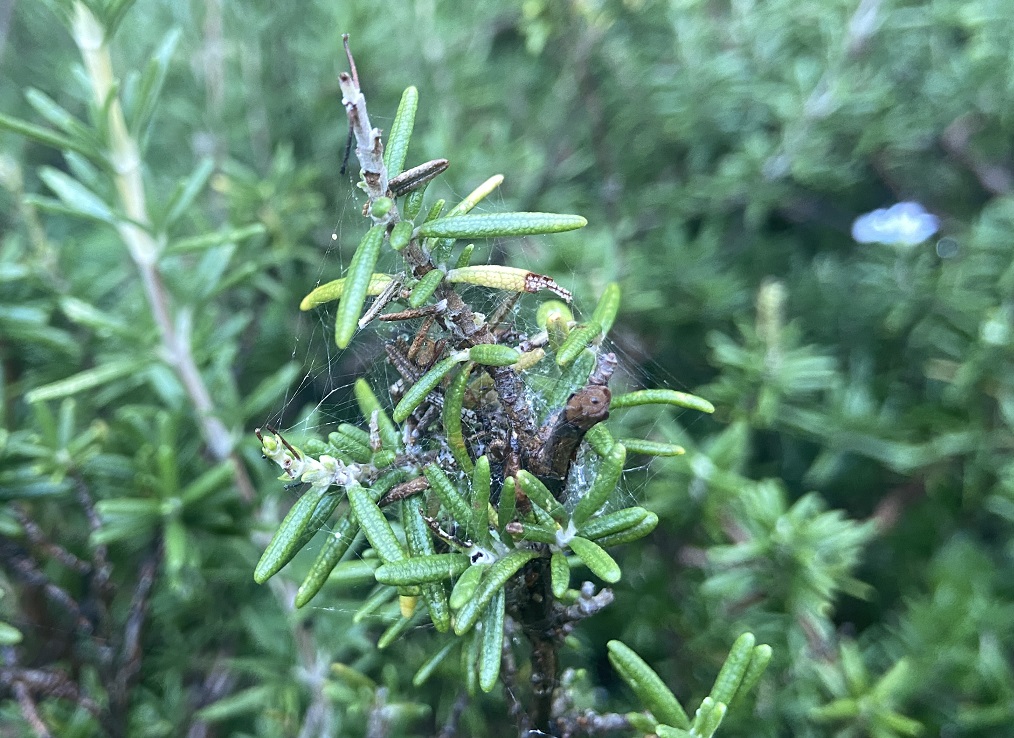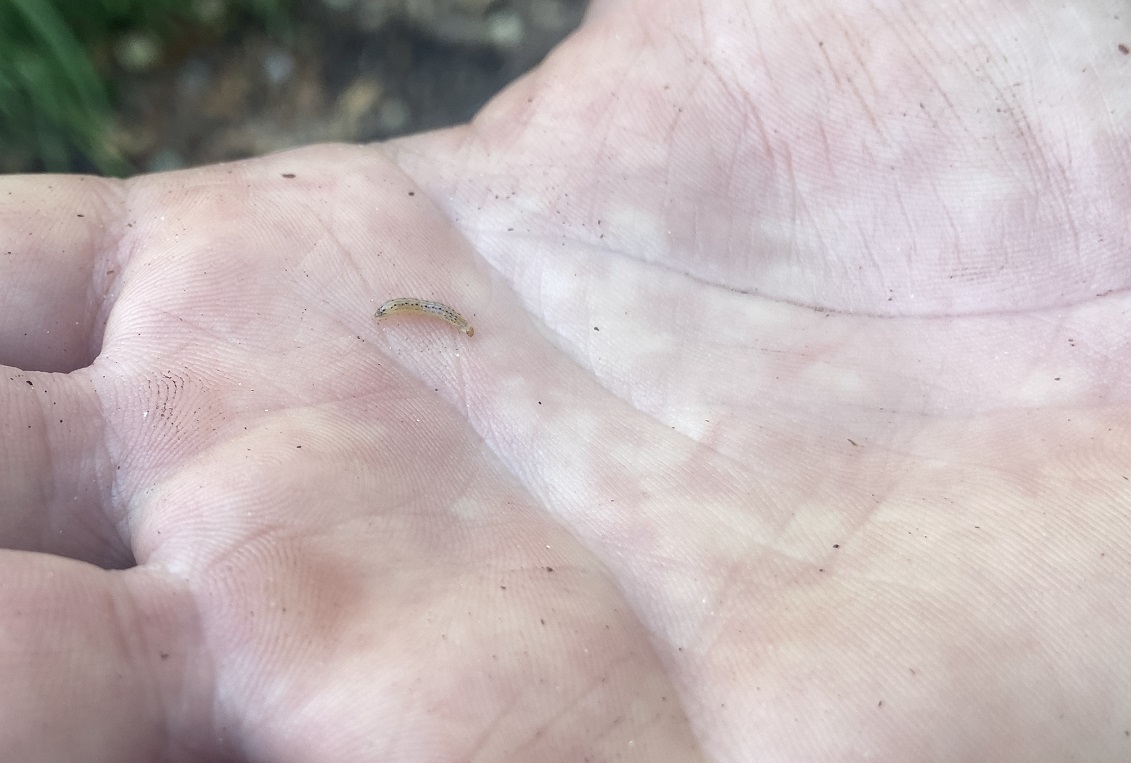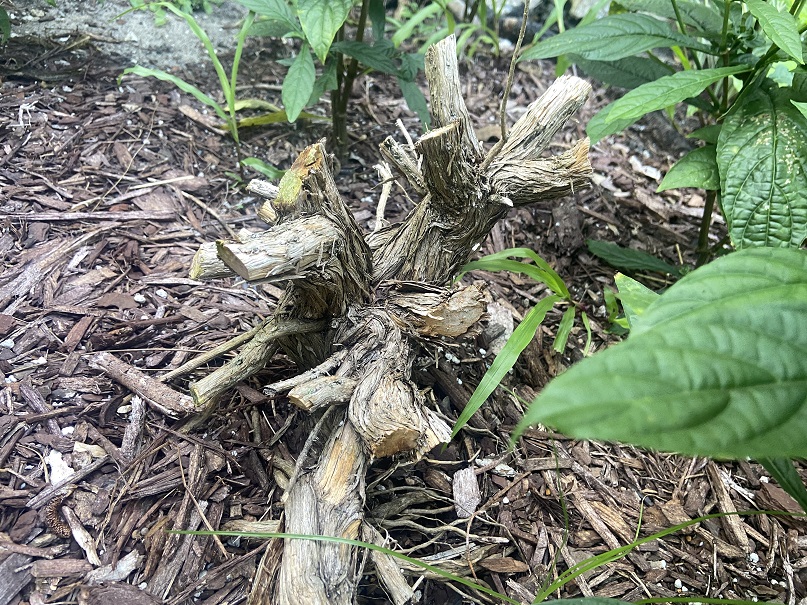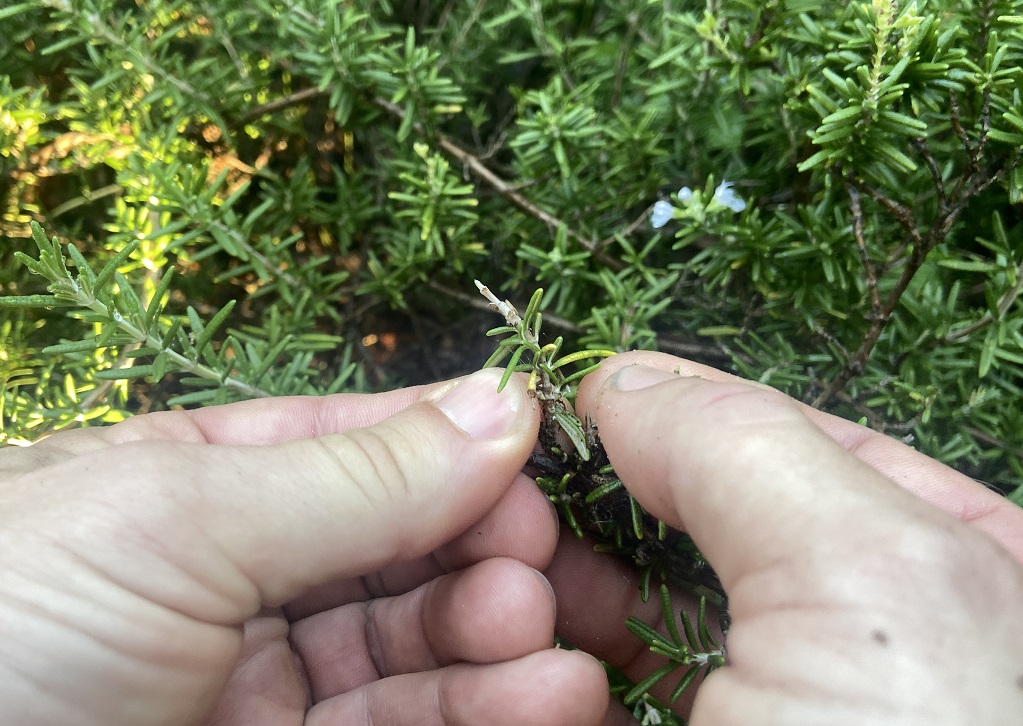
Halloween in August?

I’m all about autumnal holidays, especially now as I’m eagerly awaiting the heat and humidity of summer to take a break! On my walks through the Gardens, both at Brookgreen and at home, I’ve spotted some spiderweb-looking clumps on rosemary (Salvia rosmarinus). Now, obviously, we are in the full, blazing heat of summer so Halloween is still a ways off and clearly decorations are a bit out of the question at this time. So what are these mysterious webs?

I first noticed this webbing a year or two ago in the Gardens and thought it was evidence of an insect pest. We threw around the idea of it being spider mites (yes, not technically an insect, but we don’t need to split hairs) with the telltale webbing, but it still didn’t seem quite right. Spider mites typically enjoy a dry environment, and while rosemary may like it dry, we are (as I cannot stress enough) so very, very humid here that it didn’t seem like even the spider mites would put up with it. Obviously, the plot thickened...

Upon further investigation (and a whole lot of bravery), I pulled apart one of these bundles of webs to see what was inside. To my surprise, a small caterpillar was there to greet me. To be honest, it wasn’t much of a greeting, as these caterpillars were severely damaging our plants!

Understanding that our pest was, in fact, a caterpillar and not a mite made a big difference in determining how to proceed. After a quick Google search of “rosemary caterpillar,” we put a name to the face. Meet the southern purple mint moth! When left unchecked and with a heavy population, these insect larvae can do serious damage.

The damage the number of these did was so extensive on one rosemary plant in the Upper Right Wing last year that it was cut back to its base. While I’d like to say I’m optimistic it will grow back, I don’t actually think it will recover. So, what can you do if your rosemary is under attack?

If you stay diligent, hand removing these caterpillars (and their pupae, or cocoon-looking structures) can work well. You simply remove the webbing and all of the damaged leaves with it. In the bundle is likely the caterpillar or pupa. Simply throw that messy bundle away in the trash (do not leave it on the ground, or else they may come right back!). Chemical options also exist, such as applying Bt (Bacillus thuringiensis). If the rosemary is intended to be eaten, you will want to consider if applying a pesticide is the route you want to go and if that pesticide is considered safe for consumption. To learn more about the southern purple mint moth, be sure to check out NC State Extension’s article HERE.
If it seems like Halloween is kicking off early on your rosemary, be sure to take a closer look so you can intervene before things get out of hand. Thanks to our dedicated staff of horticulturists and volunteers, we’re doing our best to keep these caterpillars under control and our rosemary happy and healthy.
See you in the Gardens!
Hours
Hours:
December 30 - January 4 | 4 PM - 9 PM (Nights of a Thousand Candles)
Starting January 5 | 9:30 AM - 5:00 PM
For daytime admission, gates close at 4:30 PM. For their safety and the safety of our animal collection, pets are not allowed, nor can they be left in vehicles inside Brookgreen. Service animals that have received special training to assist disabled persons are welcome.
Tickets
Daily General Admission Tickets for 7 consecutive days
Children 3 and under: Free
Children 4-12: $14
Adults 13-64: $25
Seniors 65 & Over: $23
Location
1931 Brookgreen Drive
Murrells Inlet, SC 29576
Off US Highway 17 Bypass, between Murrells Inlet and Pawleys Island on South Carolina's Hammock Coast
843-235-6000
GOOGLE DIRECTIONS